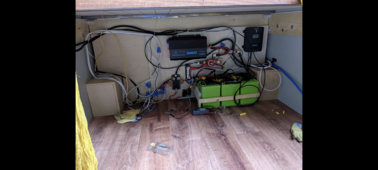krishkrash
New Member
- Joined
- Feb 21, 2021
- Messages
- 7
Hi all, I've got 3x Valence U27-12XP Lifepo4 batteries wired in parallel in a camper van. They were over-discharged over a year ago (red light is still flashing) but I was able to revive them and continue to use them afterwards. I'd like to do a rough capacity test by charging them fully, then running a load until I hit some low voltage cutoff level while measuring the total expended capacity with a battery monitor. A few questions:
1. Any issues doing the test on the full battery bank instead of on each battery individually?
2. What low voltage cutoff should I use to represent 0% useable state of charge? 10V?
3. I don't have an external BMS unfortunately so I will probably have to manually stop the test once I approach the low voltage cutoff. Any issues with this? Might have to monitor closely for several hours...
4. I know it's recommended to run the test at a certain discharge rate (0.2C) so if I expect to have maybe 350 Ah total capacity, that would be 70 A. I think I could get close to this by just running our camper induction stove at around 800 W setting (800W / 12V = 67 A). Does that sound reasonable?
Thanks!
1. Any issues doing the test on the full battery bank instead of on each battery individually?
2. What low voltage cutoff should I use to represent 0% useable state of charge? 10V?
3. I don't have an external BMS unfortunately so I will probably have to manually stop the test once I approach the low voltage cutoff. Any issues with this? Might have to monitor closely for several hours...
4. I know it's recommended to run the test at a certain discharge rate (0.2C) so if I expect to have maybe 350 Ah total capacity, that would be 70 A. I think I could get close to this by just running our camper induction stove at around 800 W setting (800W / 12V = 67 A). Does that sound reasonable?
Thanks!



